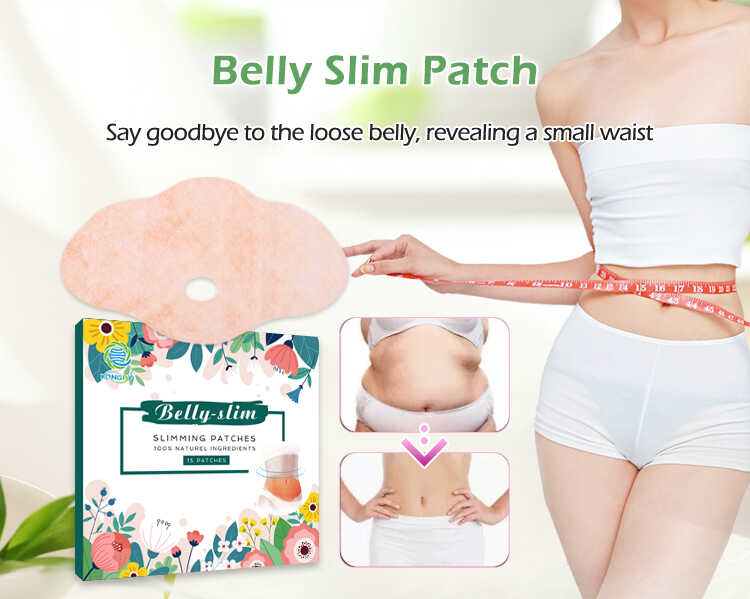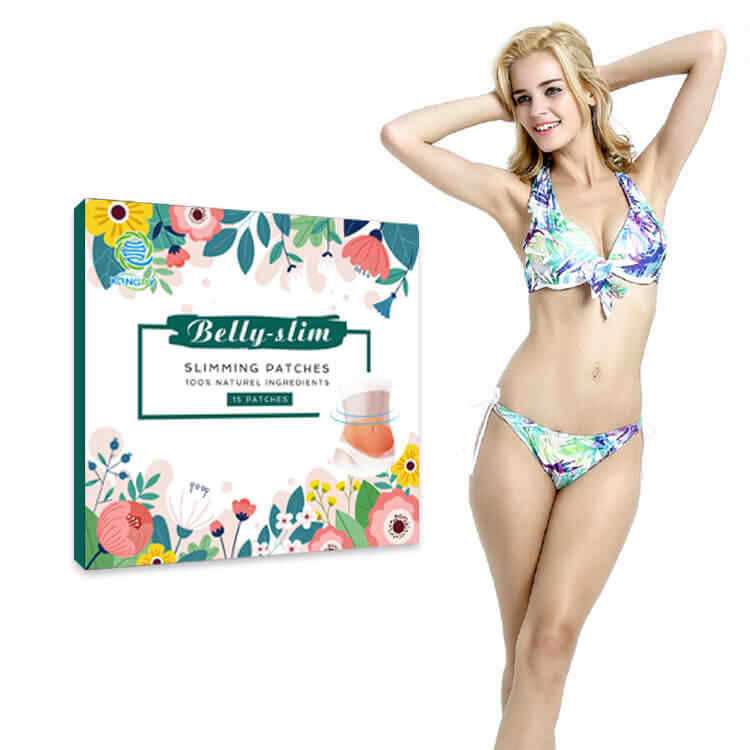Regulatory and Safety Considerations in Hydrogel Slimming Patches OEM Manufacturing
Introduction: The Importance of Safety and Compliance in the Wellness Industry
As the global wellness and weight management industry grows, hydrogel slimming patches have become increasingly popular for their convenience, non-invasive application, and effective delivery of active ingredients. However, with rising consumer awareness and tightening international standards, product safety and regulatory compliance are more important than ever.
For brands entering or expanding in this market, partnering with a reliable hydrogel slimming patches OEM is not just a production decision — it’s a strategic move to ensure every patch meets global safety, regulatory, and quality requirements. From formulation testing to labeling accuracy, compliance safeguards your brand reputation and consumer trust.
This article explores the key regulatory and safety considerations in hydrogel slimming patches OEM manufacturing, explaining how a professional hydrogel slimming patches Manufacturer ensures that products meet international standards while maintaining innovation and performance.

1. Understanding Regulatory Requirements for Hydrogel Slimming Patches
The first step toward safe and compliant manufacturing is understanding how hydrogel slimming patches are regulated globally. Depending on the ingredients, claims, and intended use, slimming patches may be categorized as cosmetic products, medical devices, or health supplements.
1.1 Cosmetic Classification
In many regions, hydrogel slimming patches that aim to improve appearance — such as reducing puffiness or firming the skin — are classified as cosmetics. These must comply with cosmetic regulations like:
EU Cosmetics Regulation (EC) No 1223/2009
U.S. FDA Cosmetic Guidelines
China’s Cosmetic Supervision and Administration Regulation (CSAR)
A qualified hydrogel slimming patches OEM ensures formulations meet these standards, using approved ingredients and maintaining proper documentation for safety assessment.
1.2 Medical Device Classification
If the slimming patch claims physiological effects (e.g., fat breakdown, circulation improvement), it may be considered a Class I or II medical device. This classification involves stricter testing, such as biocompatibility, stability, and clinical performance.
A compliant hydrogel slimming patches Manufacturer must operate under ISO 13485 and GMP (Good Manufacturing Practice) standards, ensuring traceability, risk management, and proper labeling.
1.3 Regional Compliance Differences
Each market has its own regulatory nuances:
Europe: Requires CE marking and safety data evaluations.
USA: Overseen by FDA, which mandates ingredient disclosure and labeling compliance.
Asia-Pacific: Countries like Japan and South Korea have specific approval systems for quasi-drugs or functional cosmetics.
Collaborating with a global hydrogel slimming patches Supplier experienced in multi-market compliance ensures smoother product registration and export.
2. Key Safety Considerations in Hydrogel Slimming Patches Manufacturing
Safety remains the foundation of all regulatory compliance. For hydrogel slimming patches OEM projects, safety covers several critical aspects: ingredients, skin compatibility, contamination control, and stability.
2.1 Ingredient Safety and Purity
All ingredients used in Custom hydrogel slimming patches must be non-toxic, hypoallergenic, and approved for dermal use. High-quality hydrogel slimming patches Manufacturers perform:
Ingredient toxicity screening
Microbial contamination checks
Heavy metal and residual solvent testing
Moreover, when natural actives (like caffeine or green tea extract) are used, sourcing must follow strict purity standards and traceability protocols.
2.2 Biocompatibility Testing
Since hydrogel slimming patches directly contact the skin for extended periods, biocompatibility is essential. Testing typically includes:
Dermal irritation and sensitization tests
Cytotoxicity assessments
Patch wear-time tolerance evaluations
Certified OEM partners ensure that all Private Label hydrogel slimming patches pass these tests before mass production.
2.3 Microbial and Sterility Control
Hydrogel-based products contain high water content, making them vulnerable to microbial growth. To prevent contamination, hydrogel slimming patches OEM facilities must maintain cleanroom environments, conduct batch-level microbial testing, and use sterile packaging methods.
2.4 Stability and Shelf-Life
Regulatory agencies require stability testing to determine product shelf life and storage conditions. This includes evaluating physical consistency, adhesive performance, and active ingredient potency over time.
3. The Role of Hydrogel Slimming Patches OEM in Regulatory Compliance
Working with an experienced hydrogel slimming patches OEM streamlines compliance from concept to commercialization. OEM partners provide specialized expertise in R&D, documentation, and testing — ensuring products meet safety and labeling laws in multiple markets.
3.1 Documentation and Technical Files
An OEM partner helps prepare critical documentation, such as:
Product Information Files (PIF) for EU markets
Material Safety Data Sheets (MSDS)
Clinical and safety test reports
Declaration of Conformity (for CE marking)
This ensures traceability and legal readiness for market audits or inspections.
3.2 GMP and ISO Certifications
A reliable hydrogel slimming patches Manufacturer operates under international quality standards like ISO 9001, ISO 13485, and GMP certification, ensuring all production processes are validated and monitored.
3.3 Ingredient Compliance and Label Accuracy
Regulatory compliance also covers truthful labeling — ingredients must be listed by INCI name, claims must be substantiated, and allergen information disclosed. Professional OEMs help ensure your Private Label hydrogel slimming patches meet regional labeling laws, avoiding penalties or recalls.
4. Common Regulatory Challenges and How OEM Expertise Solves Them
Despite growing demand, many brands face compliance challenges in hydrogel patch manufacturing. OEM partners play a crucial role in overcoming these obstacles efficiently.
4.1 Inconsistent Ingredient Standards
Different countries have different approved ingredient lists and concentration limits. A global hydrogel slimming patches Supplier maintains an updated regulatory database to ensure formulas meet requirements across markets.
4.2 Claim Substantiation
Marketing claims such as “fat-burning” or “metabolism-boosting” require scientific evidence. OEMs assist brands in clinical validation, providing test results or literature support for compliant claims.
4.3 Borderline Product Classification
Hydrogel slimming patches sometimes fall between cosmetic and medical categories. An experienced OEM helps determine the correct classification based on intended use and formulation, preventing legal disputes or import delays.
4.4 Post-Market Surveillance
Even after launch, ongoing monitoring is mandatory. OEMs support brands with adverse event tracking, product recall readiness, and regulatory updates — ensuring long-term compliance.
5. Quality Assurance Systems in Hydrogel Slimming Patches OEM Production
Safety doesn’t stop at regulatory compliance — it’s reinforced through robust quality assurance (QA) systems embedded in the manufacturing process.
5.1 Raw Material Inspection
All raw materials are tested for purity, moisture content, and functional performance. OEMs maintain supplier qualification programs to ensure ethical sourcing.
5.2 In-Process Quality Control
During production, OEMs conduct regular in-process inspections to verify patch thickness, adhesive uniformity, and active ingredient distribution.
5.3 Final Product Testing
Finished patches undergo multiple tests, including:
Adhesion performance
pH balance
Microbial limits
Visual and packaging inspection
This ensures that every Custom hydrogel slimming patch delivered meets the promised quality standards.
5.4 Traceability and Batch Control
Each batch has a unique identification code that tracks raw materials, production date, and QC records — essential for both recalls and regulatory audits.
6. The Importance of Partnering with a Certified Hydrogel Slimming Patches Manufacturer
Not all manufacturers are equally qualified. Choosing a certified and reputable hydrogel slimming patches Manufacturer minimizes compliance risks and ensures consistent product safety.
6.1 Certifications to Look For
ISO 13485: Quality management for medical devices
ISO 9001: General quality management
GMP Certification: Ensures hygiene and consistency
CE Certification: Required for European market entry
FDA Registration: For products sold in the U.S.
6.2 Benefits of Working with a Certified OEM
Faster regulatory approvals
Reduced risk of product recalls
Greater consumer trust
Access to global export opportunities
Whether you’re launching Private Label hydrogel slimming patches or developing a Custom hydrogel slimming patch line, a certified partner ensures every product is safe, effective, and compliant.
7. Labeling and Packaging Compliance
Regulations extend beyond the product itself — packaging and labeling must also meet strict requirements.
7.1 Labeling Requirements
Labels must include:
Product name and purpose
Full ingredient list (INCI names)
Instructions for use
Storage conditions and shelf life
Manufacturer or distributor information
Country of origin
7.2 Eco-Friendly and Safe Packaging
Beyond compliance, modern consumers value sustainability. Many OEMs now provide recyclable or biodegradable packaging options, ensuring your hydrogel slimming patches OEM products meet both safety and environmental expectations.
8. The Future of Regulatory Compliance in Hydrogel Slimming Patches
As the wellness industry evolves, regulatory agencies are placing increasing emphasis on transparency, traceability, and sustainability. Future compliance will likely focus on:
AI-based traceability systems for ingredient sourcing
Stricter global alignment on cosmetic and medical patch classification
Enhanced post-market safety surveillance
Eco-regulatory standards for packaging and materials
Forward-thinking hydrogel slimming patches Manufacturers are already adapting by integrating smart compliance systems and sustainable innovation, helping brands stay ahead of regulatory changes.
Conclusion: Compliance as the Cornerstone of Brand Trust
In today’s wellness market, success isn’t just about innovation — it’s about responsibility. Consumers expect slimming patches that are safe, effective, and ethically produced. By partnering with a certified hydrogel slimming patches OEM, brands gain access to scientific expertise, regulatory knowledge, and quality systems that guarantee safety at every step.
From Custom hydrogel slimming patches to Private Label solutions, regulatory compliance builds a foundation of trust that turns first-time users into loyal advocates. A professional hydrogel slimming patches Supplier ensures your brand not only meets global standards but also stands out as a leader in safety and quality.
Related Questions and Answers
1. Why is regulatory compliance important in hydrogel slimming patches manufacturing?
Because it ensures product safety, prevents legal risks, and builds consumer trust, especially in global markets with strict health regulations.
2. How does an OEM partner help with compliance?
A hydrogel slimming patches OEM manages testing, certification, and documentation, ensuring all ingredients and claims meet international standards.
3. What tests are required for hydrogel slimming patches?
Biocompatibility, irritation, microbial, and stability tests are essential to ensure safety and effectiveness.
4. What certifications should a Manufacturer have?
ISO 13485, ISO 9001, GMP, and CE certification indicate professional compliance and quality assurance.
5. Can Private Label hydrogel slimming patches be compliant across multiple markets?
Yes. An experienced hydrogel slimming patches Supplier can customize formulas and labels to meet region-specific regulations worldwide.






